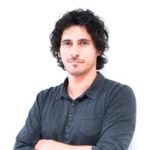
Leonardo Ricotti
14:00 - 16:00
Artificial, bioartificial and tissue-engineered organs.
The invention identifies a solution for the therapeutic treatment of the joints. In particular, the invention is a composite material and a system that can limit or even revers the degeneration of articular cartilage. A matrix loaded with particles is injected into the joints and can simultaneously stimulate the regeneration by therapeutic ultrasound.

Stato del brevetto
GRANTED

Numero di priorità
102019000002697

Data di priorità
25/02/2019

Licenza
ITALIA
PROBLEM
Osteoarthritis is a very widespread rheumatological disease, which causes severe motor disabilities and pain that prevents the regular activity of daily life. This disease mainly affects the elderly or obese population, although the cases found in athletes at a young age because of joint injuries are not negligible.
CURRENT TECHNOLOGY LIMITATIONS
Currently, there are no effective therapeutic solutions to combat osteoarthritis: only total joint prostheses are effective, but they are the ultimate weapon in advanced stages of the disease. However, this solution has numerous disadvantages such as high invasiveness and often the need for further surgery due to complication.
Our Technology and Solutions
The invention is a system made by a composite material for the therapeutic treatment of the joints that allows to significantly slow down or even reverse the degenerative and inflammatory process affecting the articular cartilage. Consequently, this allows to slow down or avoid the need to use a prosthesis without complications, also considering the costs and efficiency of joint therapies available to the state of the art prior to the filing of the patent.
The system exploits the well-known principle of ultrasonic stimulation of piezoelectric nanomaterials for the regeneration of cartilage tissues. The invention identifies a method for the therapeutic treatment of the joints which involves the use of this system and the composite material.
Advantages
The invention can avoid the need to use a prosthesis or considerably delays the need to use a prosthesis. This means a cost-effective treatment and therapeutic outcomes.
The invention also implies a reduction in pain and a significantly increase of mobility and active life from the patients’ perspective.
Roadmap
The research group is currently involved in a European (H2020) that will allow the group to further develop the technology and to arrive at validation on animal models (TRL = 5) over the next 2 years. The group is interested in establishing contacts with partners (medical device companies, investors, etc.) to begin discussing and discussing the possible next step, namely the clinical translation of this solution, certification and market.
TRL
The team
